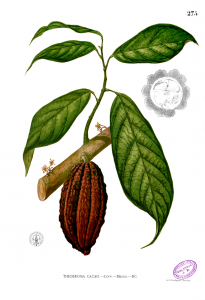Maybe you remember reading the classic Dr. Seuss tale as a child, Horton Hears a Who! Or you may have also seen the 2008 movie adaptation on TV or at some recent family vacation? For those who haven’t, or whose memory might be a little fuzzy, Horton the elephant discovers, and becomes the sole champion of, an entire microscopic community living on a speck of dust: the fabled city of Whoville.

A similar champion for the hidden microscopic communities of our world can be found here at IU–a research scientist by the name of Natalie Christian from Dr. Keith Clay’s lab in the biology department. However, instead of a speck of dust, Natalie’s microscopic communities form inside of plant leaves, and instead of the Whos of Whoville, the inhabitants of these leaf communities are tiny fungi called endophytes, for which the Latin translation literally means “inside plant.” One of Natalie’s central research goals is to better understand the importance of these microscopic communities for the health and well-being of their host plants.
Much like our own macroscopic communities and neighborhoods, these tiny fungi come together via immigration, emigration, birth, and death to form unique and diverse ecological communities on the leaves of all plants in the world–like the houseplant sitting on your windowsill, or the oak tree in your backyard, or at a local park. These tiny communities are not visible to the naked eye, and once established, they are not static: they change over time as new fungal members arrive, emigrate, reproduce, or die. And these community shifts can have different consequences on other local microscopic communities or their host plant.

Natalie studies these microscopic fungal communities in Chocolate trees (Theobroma cacao). One major influence on the immigration of fungi into these communities is the presence or absence of leaf litter in the area surrounding a tiny seedling. Basically, these tiny fungal endophytes can continue to live inside of the leaves of older trees as those leaves age, decay, and ultimately fall to the ground – afterwhich these fungi can re-colonize the inside tissues of new leaves and plants in the surrounding area – a bonafide super-network of traveling fungal spores floating around in air and space.
Armed with this knowledge, Natalie directly manipulated the types of litter surrounding some Chocolate tree seedlings in an experiment she performed on Barro Colorado Island, Panama. After just three weeks of growth in the presence of the different litter types, she used DNA sequencing techniques to figure out which fungi colonized the Cacao seedlings and how this changed when they were surrounded by different types of litter. She found that the types of fungal communities that formed inside the Cacao leaves changed dramatically based on the surrounding litter type. But even more excitingly, she found that when the litter type was from Chocolate trees, and not from other trees in the area, these tiny microscopic communities protected their host plants: defending the trees against pathogens and improving their health!
So maybe, the next time you pass by a tree, flower, fern or grass growing in the field, you’ll stop and wonder about nature’s own version of Whoville: what are the hidden influences of these communities and how do they help protect the plant and crop hosts we know and love so well? Though invisible to the naked eye, they might be doing a lot more than you think.
Edited by Rachel Skipper and Ed Basom

So much going on around us all the time! Thanks ScIU bloggers for pointing out this research. And for those with further interest, the library has a 20 min video on microorganisms and their communities including roles for good or ill they play in nature.
If you want to more about Natalie’s research, the full details of her research are now available https://doi.org/10.1098/rspb.2017.0641 !!!